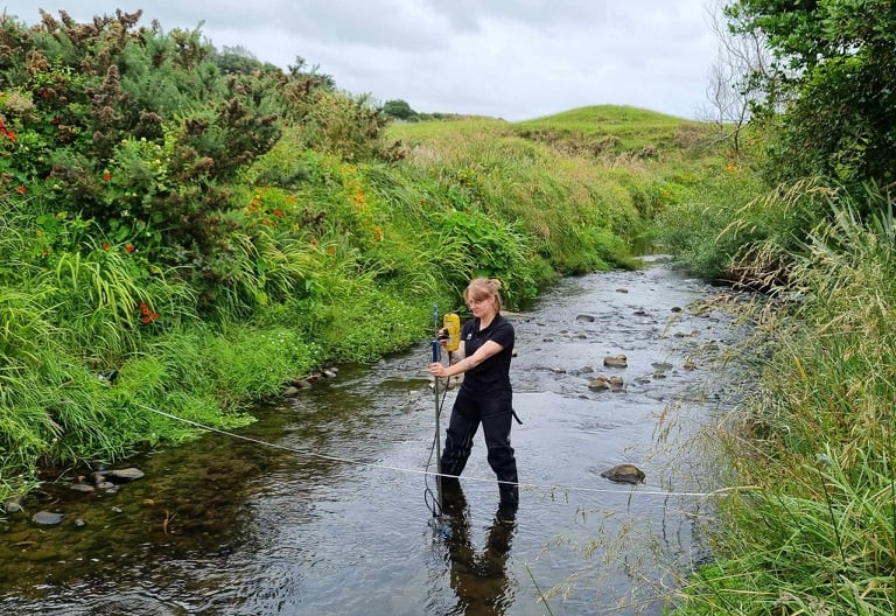The weather stats are in for 2024 and if you live near Hawken Road in South Taranaki then last year you will have enjoyed the lowest rainfall and highest air temperature in the region.

Data Analyst Chelsea Pretty checking river flow in the Pungareere Stream near Rahotu.
And those living near Ngutuwera, north of Waitotara, had to hang onto their hats on 4 February as the area recorded the highest wind gust for the year at 128.52km/hr.
Figures from Taranaki Regional Council show the region, well known for enjoying a healthy dose of rain most years, recorded 14% less than normal rainfall in 2024.
For rain gauges outside of Taranaki Maunga, Waitōtara at Hawken Rd recorded the lowest rainfall for the year at 28% less than usual but even the gauge which had the highest amount of rain – Pohokura Saddle in East Taranaki – recorded 2% less than normal.
Waitōtara at Hawken Rd also recorded the top air temperature at 31.14°C on 19 January.
Craig Pickford, the Council’s Team Leader – Environmental Data, says staff are out in all weather conditions checking 115 monitoring stations across the region to ensure the public is kept up to date about everything from rainfall to wind gusts and soil moisture to river flows.
“Everyone loves to have a yarn about the weather and if you need to find out what’s happening in our region, the best place is the environmental data page on the Council’s website where the data is updated every 15 minutes,” says Mr Pickford.
“From Ahititi in the north to Waitōtara in the south, the data is invaluable to everyone from farmers checking soil conditions to hikers needing to know what the current weather is before heading up Taranaki Maunga.
“This is particularly important when we have major weather events and we need to keep the public and agencies such Taranaki Emergency Management informed about high river flows which could put people and property at risk.”
Waitara River at Bertrand Rd saw the highest river flow on 1 September 2024 with 882.961m3/s while Manganui at Everett Park recorded the highest amount of rain for one day for a monitoring site outside Taranaki Maunga at 90mm on 12 April.
“We are certainly seeing extremes in our weather during recent years which is suggestive of climate change. This reinforces the need to keep monitoring and tracking the weather so we can build models which predict the future and inform our science, something that is not easy but vital as we prepare to face more climate upheavals in the future,” adds Mr Pickford.
To check out the Council’s environmental data page, head here
Fast facts: Last year’s climate figures
- A monitoring site on the Oaonui Stream in South Taranaki recorded the highest river water temperature - 27.46°C on 19 December
- The lowest river water temperature was 4.69°C on 16 June at the Waitaha 1 at SH3 monitoring site
- The highest amount of rain recorded on mountain monitoring sites in one day was 177.5mm at the North Egmont Visitors Centre on 9 June
- The lowest air temperature was at Tawhiti at Duffys in South Taranaki was -3.14°C on 8 May
- The maximum soil temperature was 30.62°C on 15 December at Kapoaiaia at Lighthouse
- The minimum soil temperature was 6°C at Stony at Mangatētē Bridge on 14 July.